A Beginner's Roadmap to Collecting and Grading Cards: Strategies and Insights
Navigating the world of trading cards requires a blend of knowledge, strategy, and sometimes, a bit of luck. From scouring local shops and online marketplaces to networking with other collectors and attending trade shows, the hunt for that elusive card can be as exhilarating as it is challenging. However, the quest doesn't end with finding a card; understanding the nuances of grading criteria and selecting the right grading service are pivotal steps that can significantly enhance the value and appeal of your collection. With insights from industry experts and seasoned collectors, this article will provide you with the essential tools and strategies to elevate your trading card game, whether you're a novice collector or looking to refine your existing collection. Protect your valuable collection with a premium PSA graded card case today.
Introduction to Collectible Cards

Collectible cards encompass a wide range of genres, from the iconic images of baseball and basketball players to the fantastical realms of trading card games such as Pokémon, Magic: The Gathering, and Yu-Gi-Oh!. This diverse world of collectibles has evolved significantly over the years, transitioning from simple pastime activities or niche hobbies to becoming substantial investments for enthusiasts and collectors alike. The allure of these cards is not just in their aesthetic or the enjoyment derived from collecting a series but also in the potential financial gain they represent. The rarity of a card, driven by limited releases or special editions, its demand within the collector community, the condition which ranges from mint to poor, and the cultural or historical significance it holds, all play crucial roles in determining its value.
As a collector, understanding the intricacies of what makes a card valuable is paramount. This involves not just familiarizing oneself with the market trends and the ever-changing landscape of collectible card games but also developing an eye for detail when it comes to the condition and preservation of the cards. The community around these collectibles is vibrant, offering a plethora of resources, from forums and online marketplaces to conventions and trade shows, where enthusiasts can share their knowledge, trade, and even find rare gems to add to their collections. Whether you are a novice starting out on your collecting journey or an experienced collector looking for that elusive card, the world of collectible cards offers a fascinating adventure that combines passion, knowledge, and the thrill of the hunt.
Where to Find Collectible Cards

Retail Stores
Timing and Persistence: Success in retail stores often comes down to timing. Be aware of when new releases are scheduled and plan to visit stores on release days or shortly after. Some collectors even learn the restocking schedules for their local stores to be first in line for new inventory.
Building Relationships: Getting to know the staff can be incredibly beneficial. Friendly relationships can lead to inside information on when new stock is expected. In some cases, staff may be willing to notify you about upcoming releases or hold items briefly.
Diversify Your Visits: Don't limit yourself to big-box retailers; smaller, local stores may receive limited stock that sells out less quickly. Exploring different locations can uncover hidden gems.
Local Game and Hobby Shops
Community Engagement: These shops are not just places to buy cards; they're community centers for players and collectors. Participating in events and making connections can lead to tips about rare items or exclusive shop offers.
Subscribe to Communications: Many shops use social media, newsletters, or text alerts to announce new shipments and special events. Being on these lists means you won't miss out on opportunities.
Consignment and Trade Opportunities: Some local shops offer consignment sales or have bulletin boards for local collectors to post trades. Regular visits can alert you to new listings before they're widely advertised.
Online Marketplaces
Refined Search Techniques: Learn to master the search functionality on platforms like eBay, TCGplayer, and Facebook Marketplace. Use specific keywords related to the cards you're searching for, including set names, card conditions (e.g., NM for Near Mint), and rarities. Employ filters to narrow down listings to those most relevant to your interests and budget.
Seller Research and Interaction: Beyond checking ratings and reviews, delve into the seller's history for consistency in selling similar items and their response rate to questions. Don't hesitate to ask sellers for additional details or pictures of the cards to verify their condition and authenticity. Engaging with the seller can also give you a sense of their knowledge and reliability.
Alerts and Monitoring: Set up alerts on these platforms to notify you immediately when items matching your criteria are listed. Time is of the essence, especially for highly sought-after cards that can sell quickly. Regularly monitor these alerts and be prepared to act swiftly when an opportunity arises.
Comparison Shopping: Before making a purchase, compare prices across different platforms to ensure you're getting a fair deal. Consider the total cost, including shipping and any fees, as part of your price comparison. Tools and websites that track the historical prices of collectible cards can be invaluable in this regard, helping you identify when a card's price is higher or lower than usual.
Understand Seller Policies and Buyer Protection: Familiarize yourself with the return policies and buyer protection guarantees offered by the platform and the seller. Knowing how you're protected can help mitigate risks associated with online purchases, especially if the item doesn't match the description or encounters shipping issues.
Secure Transactions: Prioritize platforms that offer secure payment options and protect your personal information. When possible, use payment methods that offer buyer protection in case the transaction doesn't go as planned.
Trade Shows and Conventions
Preparation is Key: Before attending a show, know what you're looking for and what you're willing to spend. Make a wishlist of cards and set a budget for yourself.
Early Attendance: Arriving early can give you first pick of the items vendors have brought. The best deals and rarest items often sell first.
Networking: Trade shows and conventions are excellent for meeting other collectors and vendors. Exchange contact information and discuss your interests; these connections can lead to trades or sales outside the event.
Forums and Online Communities
Active Participation: Being an active member of online forums and communities can lead to private sale or trade offers. Share your knowledge, contribute to discussions, and establish yourself as a trustworthy member.
Stay Informed: Forums often have threads dedicated to deals, sales, and trades. Regularly checking these can alert you to opportunities you might otherwise miss.
Safety First: When engaging in trades or purchases through forums, use secure payment methods and consider using a middleman service for higher-value transactions to ensure both parties fulfill their commitments.
Understanding Card Grading
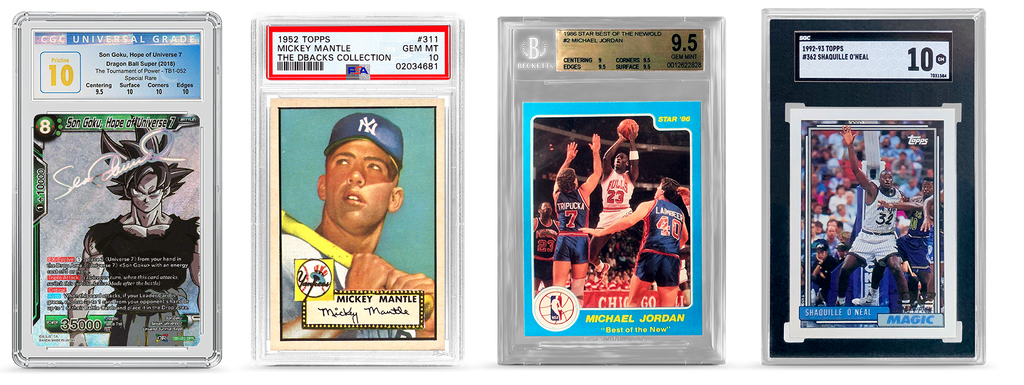
Card grading is meticulous, with each aspect of a card scrutinized closely. Here's a breakdown of the main criteria:
Centering: This refers to the alignment of the card's borders and imagery. Perfectly centered cards are rare and fetch higher grades. The front and back centering can be assessed separately, with the front being more influential on the overall grade.
Corners: The condition of a card's corners is a critical component of its grade. Sharp, undamaged corners are ideal. Any signs of wear, fraying, or rounding can significantly lower a card's grade.
Edges: Graders look for any imperfections along the card's edges, including nicks, chips, or fraying. The edges are inspected under magnification to identify any subtle flaws.
Surface: The surface evaluation covers a wide range of potential defects, including scratches, indentations, print imperfections, and glossiness. Additionally, the presence of foreign substances or signs of alteration can impact the surface grade.
Selecting a Grading Company
Choosing the right grading company depends on various factors, including the type of cards you're collecting, turnaround times, fees, and the perceived market value of their grading.
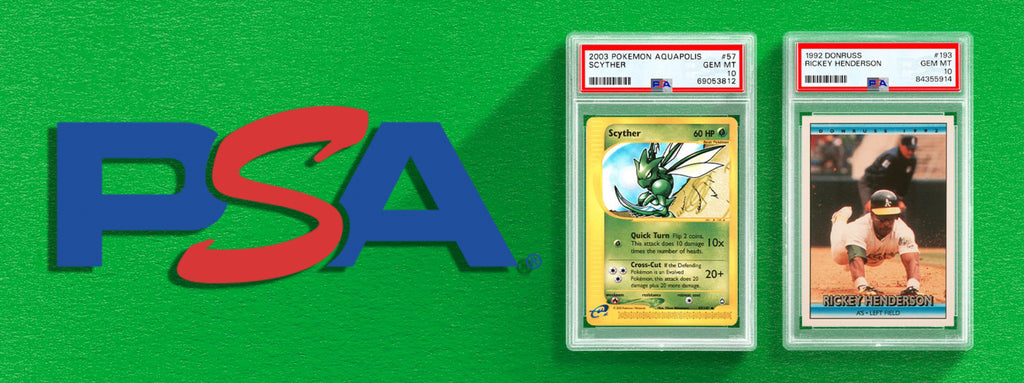
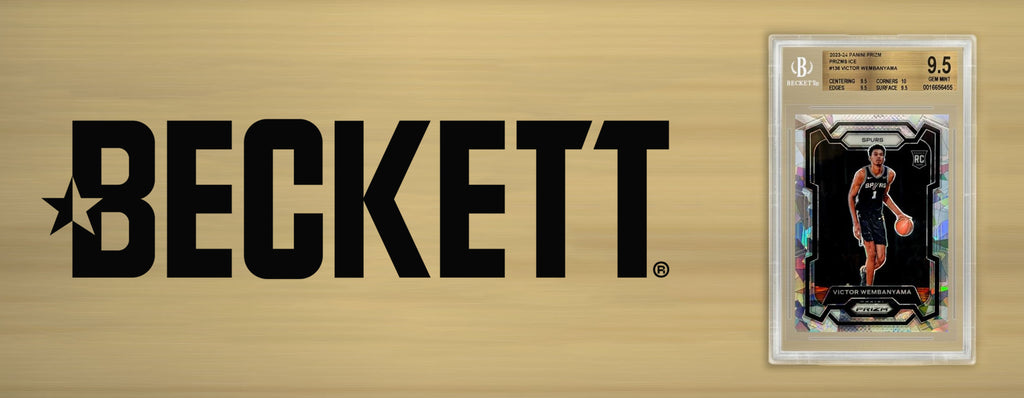
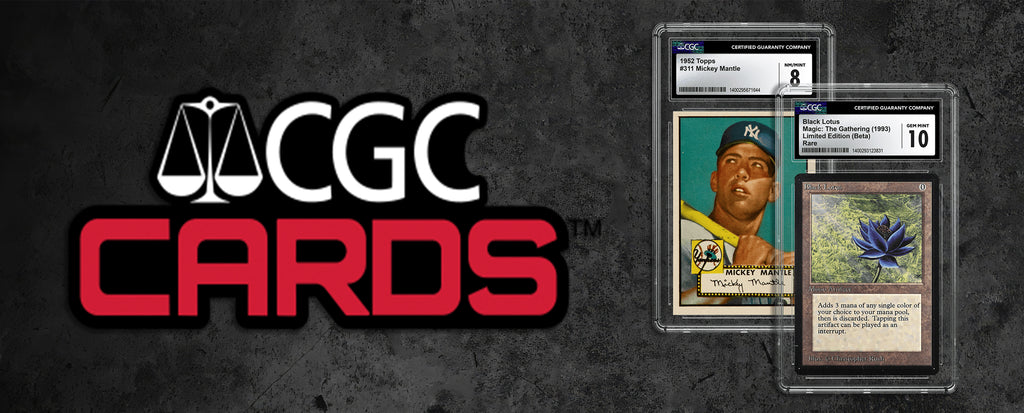
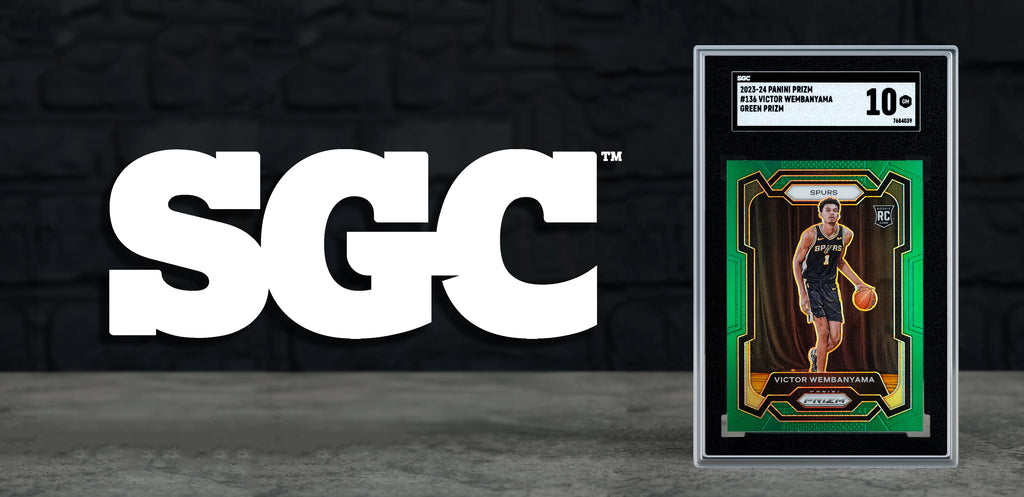
When selecting a grading company, consider the following:
Grading Scale and Criteria: Understand the grading scale used by the company. Most grading companies use a scale from 1 to 10, with 10 being a perfect condition. However, the criteria for grading can vary significantly between companies. Familiarize yourself with their grading standards, especially how they assess card centering, corners, edges, and surface.
Turnaround Time: Consider the turnaround time for grading. Some companies offer faster services than others, but this might come at a higher cost. Decide what's more important for you: getting your card back quickly or saving money.
Costs and Fees: Evaluate the cost of grading services. Prices can vary based on the value of the card, the turnaround time, and any additional services like encapsulation or detailed grading reports. Ensure the fees are within your budget and that the potential increase in your card's value justifies the cost.
Services Offered: Look into the range of services offered. Some companies offer not just grading but also autograph authentication and detailed reports on the card's condition. Consider whether these additional services are valuable to you.
Insurance and Security: Check the company's policies on insurance and security during the grading process. Ensure that your valuable cards are protected against loss, theft, or damage while in the company's possession.
Market Recognition: Assess the market's recognition of the grading company. A grade from a well-respected company can significantly increase a card's resale value. Look into which companies are most recognized and trusted by collectors and dealers in your specific area of collecting.
Customer Service: Good customer service is crucial, especially if you have questions about your submission or encounter any issues. Look for a company that is responsive, transparent, and helpful in its communications.
Submission Process: Finally, consider the ease of the submission process. Some companies have more streamlined processes than others, with clear instructions and support throughout. A straightforward submission process can save you time and hassle.
Preparing Cards for Submission
Evaluate Card Condition: Thoroughly inspect each card for signs of wear such as edge wear, corner damage, surface scratches, or centering issues. The physical condition significantly influences the grading outcome and, subsequently, the card's market value. Use a magnifying glass and good lighting to examine the cards carefully.
Clean Cards: If your cards are lightly soiled or have fingerprints, clean them gently with a soft, lint-free cloth. Avoid using water or any cleaning solutions that can damage the card. The goal is to remove any superficial dirt without compromising the card’s integrity.
Documentation: Maintain detailed records of each card before submission, including photographs and a written condition report. Note any unique features or imperfections. This documentation is crucial for insurance purposes, to track the submission process, and to provide a baseline for future condition comparisons.
Submission Process: When filling out submission forms, provide accurate and detailed information for each card. This includes the card's name, set, variant (if applicable), and your grading service preferences. Ensure that your contact information is current to avoid any issues with return shipping or notifications regarding your submission.
Submitting Your Cards

Packing and Shipping: Carefully place each card into a soft sleeve, followed by a top loader or semi-rigid holder to protect against bending and surface damage. For added protection, consider using team bags to seal multiple cards together. Use bubble wrap or foam inserts to secure the cards within a sturdy shipping box, ensuring there is no movement inside that could lead to damage during transit. Clearly label the package with the grading company’s address and your return address. Opt for a shipping method that includes tracking and insurance, especially for valuable submissions, to safeguard against loss or damage.
Grading Times and Costs: Grading companies typically offer different service levels at varying price points, influenced by processing speed and additional services like detailed reports or expedited shipping. Be aware that grading times can fluctuate based on demand, so plan your submissions accordingly, especially if you have deadlines for selling or displaying your cards. Factor in both the grading fees and shipping costs (both to the grading company and return shipping) when budgeting for submissions.
After Grading: Once grading is complete, the company will return your cards encapsulated in tamper-evident cases with the grade prominently displayed. Inspect the packages upon arrival to ensure there was no damage during shipping.
Maximizing the Value of Graded Cards
Selling or Insuring Your Cards: When considering selling your graded cards, it’s crucial to conduct market research to understand their current value, focusing on factors like grade, rarity, and demand. Utilize online auctions, collector forums, and marketplaces for pricing insights. Accurately list your cards, emphasizing their condition, grade, and unique attributes, on platforms that cater to collectors. If your collection holds significant value, explore insurance options to protect against potential loss, theft, or damage. Engage with insurers who understand collectibles, ensuring your investment is adequately covered. Keep comprehensive records, including grades and valuations, to facilitate both sales and insurance processes.
Displaying Your Collection: Displaying your collection involves choosing methods that both highlight and safeguard your graded cards. Opt for display solutions that offer protection from environmental factors, such as UV light, and complement your home or office decor. Consider framed cases, wall-mounted displays, or cabinets with UV protection to prevent fading and maintain optimal conditions. Be mindful of placement, avoiding direct sunlight and areas with fluctuating temperatures or high humidity. If you have a large collection, rotate displays to showcase different cards over time, ensuring they remain accessible for enjoyment and viewing without compromising their condition.
Conclusion
Finding and grading collectible cards can be a rewarding aspect of the hobby, whether for personal enjoyment or as an investment. By understanding where to find valuable cards, how to submit them for grading, and how to care for your collection, you can enhance your collecting experience and potentially increase the value of your collection. Remember, collecting should be fun, so enjoy the hunt for those hidden gems and the process of preserving them.
Safeguard your prized cards with a top-quality PSA card case. Order yours now and ensure your collection's longevity!

Leave a comment